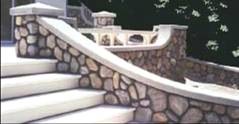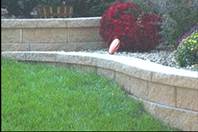Wall Caps and Coping Applications
Wall caps and coping are widely used in the Commercial and Residential fields.CommercialYou will find that wall caps and coping are applied commercially particularly in the construction industry. Wall caps and coping can be custom made for all types of masonry walls and blocks, whether they are large or small. |
 |
Residential
Wall caps and coping are very popular in the landscaping industry, especially for residential applications.
Swimming Pool and Concrete Pool Coping
Commonly used for exterior purposes, such as pool coping. Pool coping is the edging between the water’s edge and the pool decking. Hence it is important that the coping has a smooth, rounded edge, so as to prevent injury as you enter and exit the pool.
 |
Retaining Wall CapsWall caps and coping are also used around the backyard for things like wall caps on retaining walls and general landscaping structures. |
Indoors
Today wall caps and coping are also applied to the interior of the house, for example as coping for indoor plant boxes.
Materials Used
List of materials which can be used for wall caps and coping:
|
 |
Textures
Wall caps and copings are available in a variety of textures, for use in a variety of structural purposes:
Rough
This texture creates a very natural and rustic look, which is very popular for surface applications
Another type of texture is known as ‘extreme’ rough texture. It is rougher than others and very durable.
Smooth
This texture type is quite like the result of a painted surface, and also very durable.
Washed
This feature is a little less smooth, with a porous-like texture, and just as durable as the other variations.
Design Features
 |
When designing wall caps and coping, it is important to consider the performance of the element in service. Things like the movement, the material used, the location, and the joint connections, should all be factored into the designing process. Another factor to consider in the design process is the aesthetic appeal. The color, texture, material used and the structure are all significant in the aesthetic appeal. |





